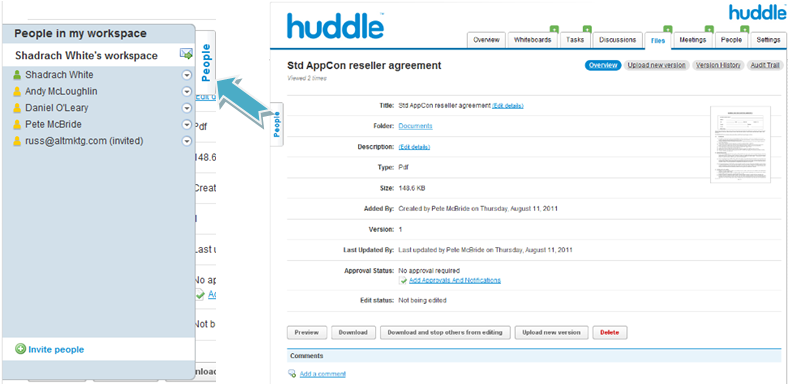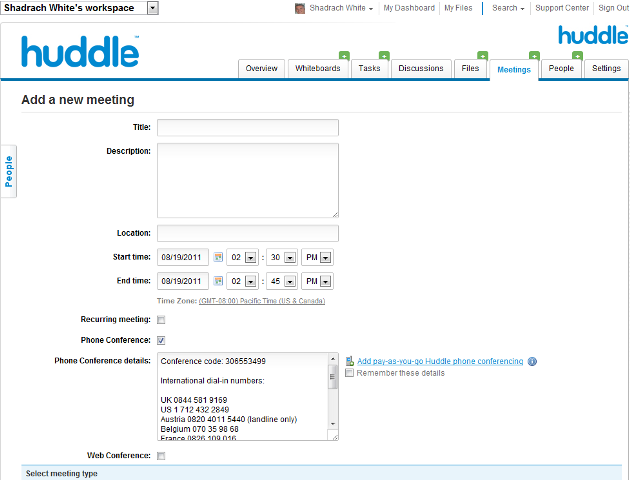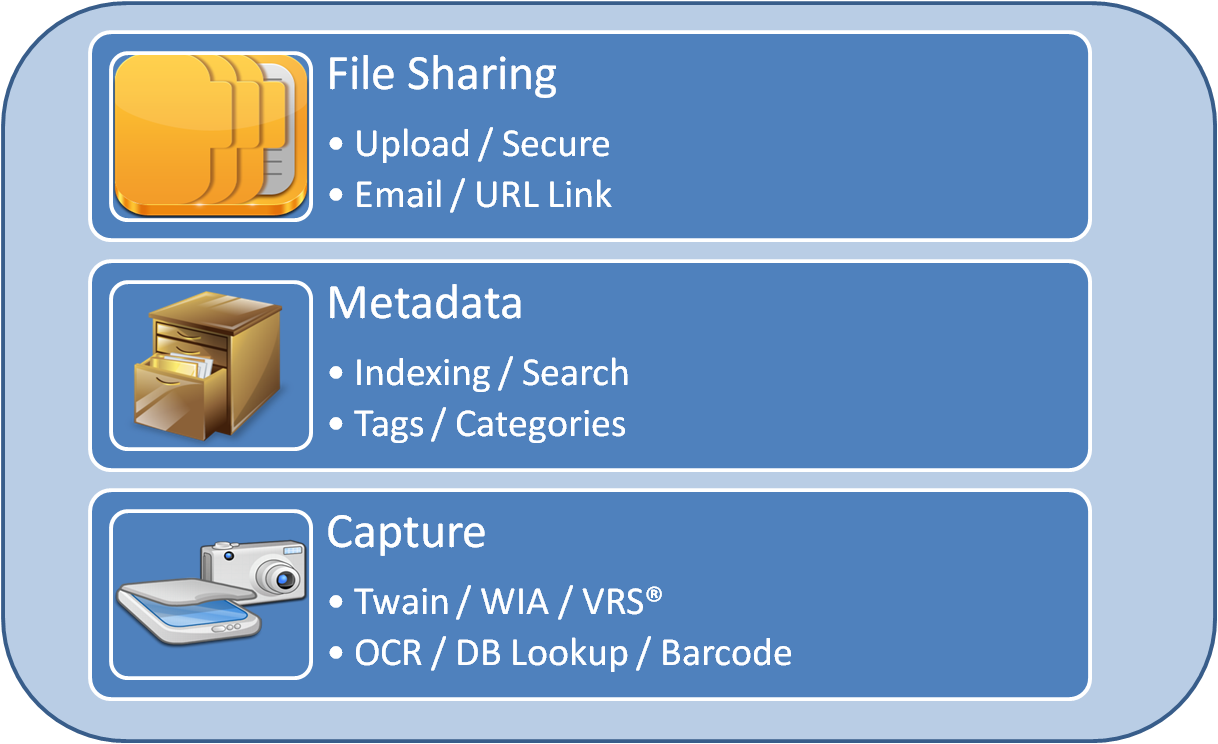Many cities, municipalities and state agencies are facing massive budget shortfalls, furloughs and even employee lay-offs. I have worked with government entities for most of my career. Today the environment for working with government entities is very different from any other time I can remember. In a 2006 article featured on the cover of Business Solutions Magazine I stated: “Back in the late ’90s, many state, county, and city governments made significant investments in imaging and document management technologies, where their criteria for provider selection was based largely on price,” I went on to conclude that many entities ended up scraping large ECM initiatives in part due to underfunding of the project by focusing on the lowest bidder and not enough on the overall solution or project delivery models being proposed by vendors. “Unlocking the secrets to Government ECM Sales”.
Over the last week I have been using a cloud based service called Huddle.
I had a chance to sit down and chat with Andy McLoughlin, co-founder and all around great chap. His background implementing legacy ECM software solutions in the Insurance and Finance verticals gave him great experience and inspiration to embark on building a whole new way of sharing and managing documents and content.
The company is 4 years old and based in the United Kingdom. Over 90,000 businesses are actively using Huddle to share large files, get document approvals faster, and keep projects on track by giving users the ability to access files from mobile devices securely using an intuitive and agile interface. The company describes their tool as the number one SharePoint alternative in the cloud.
Great for project managers, wikis, team discussion threads and task based document approval processes. It can greatly reduce email traffic and confusion over what is the current version of a document. With built-in audit, workflow and version controls teams can always be sure of what they are working on and what changes colleagues have made or suggested.
When you first register for Huddle you are required to accept the terms of use and license agreement. Now most of us do not actually read these documents, we click accept and start happily using these types of services. I did take a few minutes to read through the documents and found several areas of interest.
- Huddle accounts are given on an individual user basis, you can have only one login
- You must indemnify Huddle for the content use & rights you upload
- You may not provide third party access to the service
- There is an API that can be used to integrate Huddle with other platforms or services
- If you do embed or integrate a commercial service using the API you must include a “Powered by Huddle” logo
- Jurisdiction for legal authority is England / Wales
After subscribing to the service Huddle does a good job of communication and follows up with automated email notifications and personal calls to make sure you get familiar with the service. No kidding, they actually call you and say hello. It was actually a very nice experience and it showed a significant focus on customer service. I believe this is smart and that it builds in brand loyalty and a sense of belonging to the Huddle community.
Huddle uses a familiar Dashboard approach when you login to the site. The interface is laid out with dockable widgets giving each user the ability to show or hide details about items in their Workspaces, Tasks, Notifications and your Calendar. It also gives a quick chronological view of activity in a ‘What’s New’ list. By quickly clicking active Workspaces you are taken to a tabbed interface so you can start Huddling.
The tab interface will be easily navigated by new users. The tabs also provide easily clickable green + signs that are nested above the main tab. These allow for quick access for adding new files, inviting people to workspaces, scheduling meetings and create tasks or whiteboards.
Document sharing is all about people and the need to work collaboratively with each other. Whether its colleagues or business partners everyone needs to share content for review, comment, edit and to complete the document authoring or content creation process. So it is not surprising that no matter where you are in the Huddle interface you get a very handy ‘People’ tab to the left of the user interface.
Accessing and viewing ‘Files’ in Huddle is very straightforward. The ‘Files’ tab presents the user with a list of documents that can be viewed in detail or as thumbnails. Thumbnails do show a snapshot of PDF and TIFF files as an image icon but Office document thumbnails show only as a logo placeholder. After uploading scanned TIFF files I was unable to launch the viewer. So I contacted Huddle support and they quickly determined that an update to the service was needed to resolve the issue. This is a prime example of how newer agile focused software development tools and groups can win over the legacy waterfall methods used by most software giants.
Standard metadata and version control fields provide for elementary control and identification of documents within a workspace. In addition comment fields allow for ongoing communication threads for each participant in a workspace. Custom metadata fields are not supported at this time; this would be a great enhancement for organizations wanting to add things like customer, patient or account number. New files or entire folders can be uploaded very quickly; the performance for uploading files is very fast. In addition a drag and drop interface allows for uploading of 50 files simultaneously in one easy step.
When I accessed the ‘Whiteboards’ tab I took the name of the tab literally and was expecting to be able to jot down notes and draw network diagrams to show Workspace users graphical illustrations of a particular topic or project. The tab name is more aptly described as a simple wiki for collaboration on text between Workspace users. The tab is useful and additional features should make this an even more exciting area for collaboration in the future. There is also a discussions tab that provides a bulletin board-style tool for threaded discussions.
The ‘Tasks’ tab is where Huddle really starts to give you a glimpse of what it could become. The concept of tasks is based on a simple approach to collaboration for approving documents. The interface is laid out quite nicely in a list that allows for rolling up task items or creating new ones. If Huddle were to add some linear workflow capabilities for conditional routing based on status flags or boolean logic it would be a big leap forward.
In order to keep your colleagues and team members on the same page just access the ‘Meetings’ tab. This gives users the ability to schedule online meetings in a Workspace or by invitation only for team members you specify.
Meeting setup is very simple and will be familiar to anyone who has used other web conferencing services. Huddle meetings can include teleconferencing features in a ‘pay as you go’ model. Do not confuse Huddle with a full featured Web Conferencing service; you will still need to use your preferred service for desktop sharing features.
I found that Huddle was easy to use and the company really cared about its customers and prospects. Not surprising for an up and coming cloud based service provider but uncommon for a traditional software company. If you are looking for document collaboration that is more than just a file sharing service Huddle is a great option, I encourage you to check them out.
Check out http://cloudpwr.com
I have spent nearly two decades selling, designing and delivering complex electronic document management and workflow solutions using third party software. In 2010 I led a group that was developing a new content management solution from the ground up. It was exciting and fun to be using all that knowledge and experience to design something new and different, yet keeping true to best practices and fundamentals. Initially the software was designed to be implemented as an on-premise solution but we began porting the technology to support a cloud strategy in early 2011. As the hours of research and development mounted I gained a unique perspective on the many approaches to cloud computing for document storage and collaboration. I relied on internal team members to focus on the core development activities while I continued to lay out key areas that would differentiate the product.
My guiding design principle was simplicity. “Give the user everything the need and nothing they don’t”
At this years Info360 event in Washington DC I heard Aaron Levie echo some of these same perspectives in his keynote addresses. I spoke with Spencer Chen from Huddle and heard some of what they are doing differently from Box. Although a review of the websites make it clear that they both see SharePoint as their main competitor. What they all have in common is a fundamental belief that paper is irrelevant so they don’t really address the capture aspects that are important to any real world deployment of ECM technology.
Jeff Shuey, whom I respect a great deal recently posted a blog after the Microsoft WPC11 event that shows this bias in a bold quote from Steve Ballmer. The difference in the approach I was taking came from my experience implementing Legacy ECM solutions for accounts payable, human resources, medical records, waybills, etc. There are just some basic facts of document management, records management and compliance that cannot be ignored or dismissed. Granted some of what the enterprise thinks they need and what they really need are often very different. But that should be managed as a function of solution sales, professional consulting and project management. To simply dismiss these functions or requirements leaves the solution incomplete and more importantly leaves real revenue on the table.
There are a variety of software offerings that are gaining momentum in the Cloud space. They each differ slightly in their functional approach and cost. Some like Box and Huddle are focused on simplicity using a file sharing approach to make collaboration easy and affordable. Others like SpringCM and FileBound are taking a more holistic approach and incorporating more traditional document management capture, storage, auditing, workflow and search functions.
Key components to consider:
Advanced features to consider:
Costs are all over the board some services are focused on giving you free storage while others are using a more traditional method of selling the software either in a monthly fee or annual contract. I have only touched on 4 of the players in this market. There are dozens more in niche industries like Medical, Real Estate, Transportation, and Legal that may be relatively unknown to some ECM professionals. To say the least there is no shortage of options and I am certain more will be popping up in the near future.
If you have used any of the 4 products I have highlighted I would like to hear from you in the comment section.
Check out http://cloudpwr.com
The current state of content management software is in flux. A transformation is taking shape in the form of innovation, specificity to function and the technology used to process and share content. While stalwarts of the industry continue to add layers of complexity, upstarts have begun to make their mark advocating simplicity of design.
The fundamental needs for managing unstructured information that exists outside of traditional line of business or structured data systems has not changed. What is changing are the ways in which we want to use content, the devices that access content and the demographics of the workforce. ECM software is now considered by many as an IT Platform. As a Platform, the software is required to meet a laundry list of features and capabilities regardless of operational business or user benefit. Industry analyst and consultants have cavorted with software companies in order to create a quadrant of magic features that every ECM buyer must evaluate, or face certain failure. I will not even mention that whole Sarbanes Oxley mess.
I have been fortunate to work with a tremendously talented group of ECM professionals in my career. I have been involved at every level of solution design for each of the various defined disciplines in the industry. Using ECM technology to enhance business productivity has given me the experience to know the difference between necessary functions and unnecessary features. By working in technical engineering, project management and user roles in hundreds of ECM use cases, I have come to the conclusion that most legacy software packages are way too complicated and unnecessarily expensive.
While many lauded the arrival of SharePoint as the coup de grâce for legacy vendors, many acknowledge that the platform is so broad and requires so much customization that it fails to deliver key business productivity functions as quickly and easily as the Microsoft marketing team would have you believe. Meanwhile, the other legacy vendors continues to layer newer e2.0 features on top of already bloated product suites. Legacy ECM solutions get the job done, and they will meet any diligent RFP coordinators mandatory requirements including most if not all of the evaluation committee’s checklist criteria. However, if you are evaluating ECM software today you should take a step back and ask yourself; “Do I really need all those buttons, commands and features?”
Many longstanding ECM professionals are in a catch twenty two. While many might agree with me, how many of them are willing to stand up and say so. If you currently sell, integrate, consult or work in this industry you likely work with legacy ECM vendors to put the proverbial food on the table. The history of technology teaches us that change is inevitable. As we look to the future, we should all know that the next generation ECM technology will not be what it has been or what it is today.
Comments Welcomed.
Check out http://cloudpwr.com





